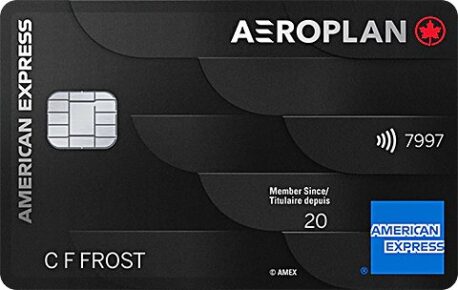An annuity is just one of several financial products Canadians can use to plan and save for retirement. Annuities can provide you with guaranteed income during retirement, though the payment process may look different depending on which type of annuity you choose.
» MORE: What to know about RRIFs
What is an annuity?
An annuity is a financial product that you can purchase from a provider (usually an insurance company). Annuities can be paid for via a single lump sum or by making a number of payments over time. An annuity is typically used to provide a guaranteed income in your retirement years.
The payments that you receive upon retirement come from
- The money you paid to purchase the annuity (also called your capital).
- The interest/investment earnings on that capital.
- A transfer of capital from annuity holders who passed away earlier than statistically expected (assuming you end up living longer than statistically expected).
If you purchase an annuity, you’ll receive payments at different frequencies throughout the year depending on what type of annuity you choose. Options typically include monthly, every three months, every six months, or annual payouts.
» MORE: Registered Retirement Savings Plans 101
Different types of annuities
There are multiple types of annuities to choose from, so it’s important to understand how they differ before choosing which one best suits your needs.
Life annuity
This type of annuity provides you with guaranteed income throughout the remainder of your life. The longer you live, the more money your annuity provides in total. Generally, payments stop when you die, which means no funds from the annuity will go to your estate or beneficiaries (although some providers will add this option for an additional cost).
Term-certain annuity
Term-certain annuities pay guaranteed income for a fixed amount of time. If you pass away before the end of this predetermined term, your beneficiary or estate will receive the remainder of the annuity either as regular payments or a lump sum.
Variable annuity
With this kind of annuity, your provider invests the money you use to buy it. As a result, you will receive a mixture of fixed and variable income. The fixed-income portion of the payouts will usually be smaller than what you would receive with a life or term-certain annuity and the variable portion will depend on the investments and how they perform.
How to buy an annuity in Canada
An annuity can be purchased from an insurance provider or an annuity broker, which is an individual licensed to sell annuities from more than one insurance company in a designated province.
As with all financial products, be sure to shop around before you buy an annuity to get the best rates and terms available. You can often compare rates online or use a broker to help find the best options for you.
Most annuity providers also have online annuity calculators that can help you estimate how much you will get back based on what you put in. Note that many Canadian annuity providers require a minimum contribution of $50,000.
» MORE: How older homeowners can use a reverse mortgage
Rules and tax implications of annuities
It’s important to note that you cannot just withdraw a big lump sum from an annuity. The money you pay is locked in and you will only get a pre-determined money each period. The rest is inaccessible, which is beneficial when it comes to long-term retirement planning, however, could prove troublesome if you find yourself in need of the money.
It’s also important to note that an annuity is a contract which means, typically, you cannot cancel or change providers. Your contract may have something called a cooling off period in which you can cancel without penalty for a specific time, but this is only available for some annuities so be sure to read the fine print.
When you receive payments from an annuity, that money must be declared as income on your annual tax return. The amount of tax you owe will depend on whether you used registered or non-registered funds to purchase the annuity.
Note that the amount of income you receive from your annuity will depend on several factors including:
- Your sex.
- Age and health when you purchase the annuity.
- The amount of money you invest in an annuity.
- Type of annuity.
- The annuity provider.
- The rates of interest when you purchase your annuity.
- The length of time you want to receive payments.
- Whether you can name a beneficiary who will receive payments after you die.
» MORE: What is a high-interest savings account?
Annuity pros and cons
Annuities can be beneficial for some individuals but they aren’t right for everyone. Here are the main pros and cons to be aware of.
Pros
- Guaranteed income in your retirement years.
- A tax-deferred option for RRSP funds when they reach maturity.
- You may be able to name a beneficiary who will continue to receive annuity payments after you die.
Cons
- Zero liquidity. Your money is locked in.
- You pay a commission and other fees on annuities since they are an insurance product.
- You can lose money in an annuity if you don’t live long enough.
- If the insurance company that provides your annuity goes out of business, you may only recover a portion of your payments from the consumer protection agency, Assuris.
- Adding extra provisions costs you more money.
- May require a large initial investment of cash.
Alternatives to annuities in Canada
If an annuity doesn’t seem right for you, there are plenty of other financial products that can help you save for retirement or provide income after you stop working. These include:
- The Canada Pension Plan.
- Employer pension plans.
- Registered Retirement Savings Plans (RRSPs).
- Registered Retirement Income Funds (RRIFs).
- Tax-free savings accounts.

How Does Canada’s Registered Disability Savings Plan (RDSP) Work?
The Registered Disability Savings Plan (RDSP) helps those with disabilities create long-term savings. The government matches contributions and gives up to $20,000 to qualifying low-income plan beneficiaries.

What Is Old Age Security and How Does It Work?
Canada’s Old Age Security (OAS) pension helps seniors supplement their incomes and, along with the Canada Pension Plan, is part of the country’s public retirement income system.

TFSA vs. RRSP: What is The Difference and How to Choose
The tax-free withdrawals of a TFSA offer more flexibility, but the tax-deferred contributions of an RRSP are great for retirement. The type of account you choose will depend on your savings goals.

Defined Benefit vs. Defined Contribution Pension Plans
The main differences between a defined benefit and defined contribution pension plan are who funds it, who manages it, and whether or not it pays out a predetermined amount.






